The Lamborghini Urraco was designed by Marcello Gandini as an answer to the Ferrari Dino and the Porsche 911. It has a 2+2 seating arrangement and a mid-mounted V8 with a modest amount of trunk space and pure 1970s Bertone styling.
The Urraco is often forgotten by automotive enthusiasts due to the fact that it always existed in the shadows of glitzy Lamborghini supercars like the Miura and the Countach. Whereas the Ferrari Dino has gone on to become a six figure car the Urraco is still typically valued in the $60,000 – $80,000+ USD range.
Fast Facts – The Lamborghini Urraco
- In 1968, Ferruccio Lamborghini set out to create a new vehicle that would compete with cars like the Porsche 911 and the Ferrari Dino, a more affordable mid-engined sports car wirth a 2+2 seating arrangement that was more practical than the Miura or the Countach.
- Ferruccio brought together two of the Italian automotive industry’s most renowned talents to develop the Urraco. Marcello Gandini, the man behind the legendary designs of the Miura and Countach, styled the Urraco’s distinctive angular appearance, while engineer Paolo Stanzani developed the innovative chassis, suspension, and a new V8 engine.
- The Urraco featured a monocoque chassis made from folded and welded sheet metal, which provided a lightweight and rigid structure. Additionally, its mid-engine layout improved handling and balance over its rear-engined rival from Stuttgart.
- Over its production run, the Urraco saw several revisions to cater to different markets and regulatory environments. The original 2.5 liter P250 was followed by the more powerful 3.0 liter P300, designed for the American market, and the 2.0 liter P200, developed in response to Italy’s restrictive tax policies on larger engines.
Building The First “Practical” Mid-Engined Lamborghini
In the late 1960s it became clear that there was a demand for mid-engined sports cars that fell more inline with the performance of the Porsche 911 than V12 supercars like the Lamborghini Miura – more affordable vehicles with 2+2 seating and a reasonable amount of trunk space that could (theoretically) be driven daily.
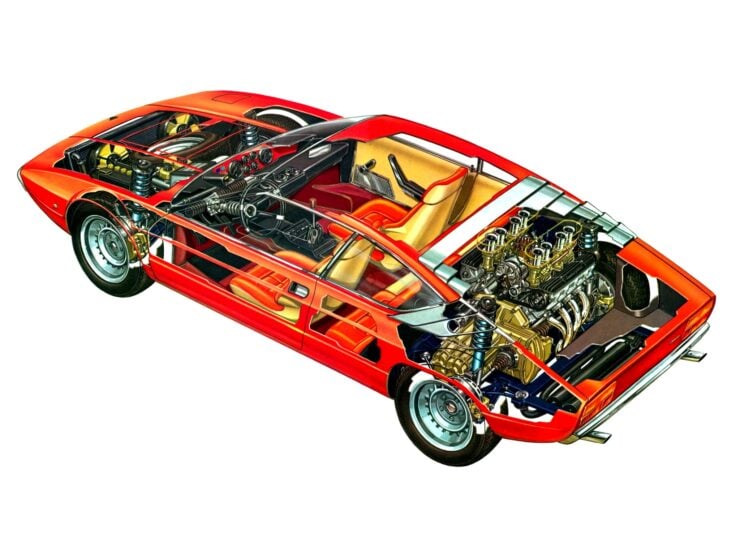
This cutaway illustration shows beneath the skin of the Lamborghini Urraco P250. You’ll note that the engine is mounted transversely in the rear with the transmission on the driver’s side. This means the car is mid-engined and it allowed some space behind it for a 10 cubic foot trunk. Image courtesy of Lamborghini.
Ferrari had come to the same conclusion a little earlier on, releasing the Ferrari Dino 206 GT in 1967 which was followed by the Dino 246 GT and GTS in 1969. Maserati would later be similarly inspired, releasing the mid-engined 2+2 Maserati Merak in 1972.
The Lamborghini Urraco would require a blank-slate design, with an all new monocoque shell and a new all-alloy V8 engine. It required considerable expense but Ferruccio Lamborghini believed they could eventually sell 1,000 of these new cars per year, vastly more than the ~100-200 supercars they had been manufacturing previously.
The development project was headed by the legendary Paolo Stanzani, who developed the new steel monocoque body and an advanced new 2.5 liter V8 with an alloy block, alloy heads, a single overhead cam per bank, and a 5-speed transmission that would all bolt together and be installed transversely behind the rear seats but in front of the rear axle line for improved mid-engine balance.
The Urraco used MacPherson strut suspension on all four corners with anti-roll bars front and back, and as you might expect the car was fitted with disc brakes at all four wheels. Behind the engine at the very rear of the car was a trunk offering 10 cubic feet in storage space – a generous amount in a car of this type, though many owners simply placed their weekend bags in the backseats which were rarely used.
Above Video: This onboard footage gives you a driver’s eye-view of what it’s like to drive a Lamborghini Urraco through some Italian hills with the sound of the V8 just behind you.
The body of the car was penned by the great Marcello Gandini who at that time was working at Bertone. Gandini is the man responsible for some of the most iconic designs of the period including the Lamborghini Miura and the Countach, not to mention the Lancia Stratos, Alfa Romeo Montreal, Fiat X1/9, and countless others.
Gandini designed the Urraco with a sharp, wedge shaped body that had seating for two adults in the front and two children in the rear, a traditional 2+2 seating arrangement that would make the car far more usable than a two-seater for those with kids.
The design was clearly influenced by the Gandini-designed 1968 Alfa Romeo Carabo concept car and the later Ferrari Dino 308 GT4 (also a Gandini design) shared similar lines.
The Lamborghini Urraco
The prototype of the Lamborghini Urraco was first shown to the public at the 1970 Turin Auto Show and it received a warm reception. Its styling was far more modern than that of either the Porsche 911 or the Dino 246 GT, and orders began to roll in.
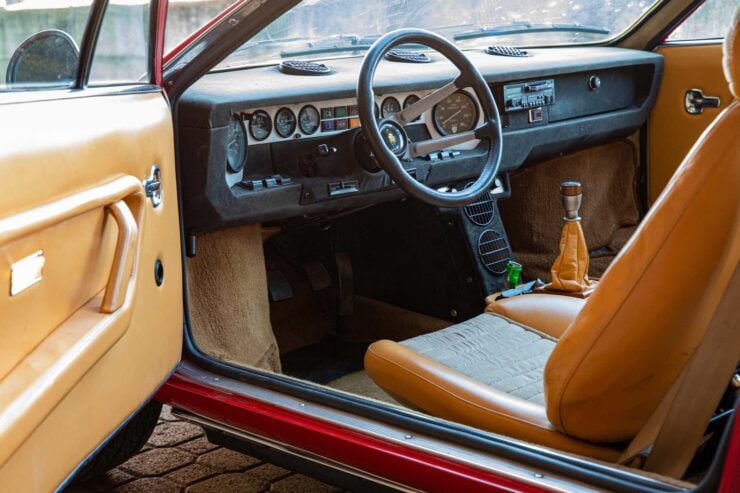
The interior of the car is well appointed, with tan leather upholstery, 2+2 seating, air-conditioning, Jaeger instruments, and a Blaupunkt radio/cassette player.
Unfortunately Lamborghini was going through some significant financial and organizational issues at the time, as a result the production run of the Urraco didn’t actually begin until 1972 by which time some of the original enthusiasm had waned.
Ferruccio Lamborghini had originally hoped to sell 1,000 Urracos per year however this wasn’t to be. Early on in the production run there were a number of quality control issues, and once they had been ironed out the 1973 Oil Crisis hit, sending gasoline prices into the stratosphere and making high-end V8 Italian sports cars seem like a foolhardy purchase.
The first car in the series was the 2.5 liter Lamborghini Urraco P250, which would later be succeeded by the improved Lamborghini Urraco P250S and eventually by the 3.0 liter Lamborghini Urraco P300. The P111 and P200 were also offered during this time though in far smaller numbers.
The Urraco was powered by a transversely mounted V8 with an alloy block and heads. The earlier cars had the 2.5 liter version with single overhead cams per bank, with later cars getting the 3.0 liter unit with double overhead cams per bank.
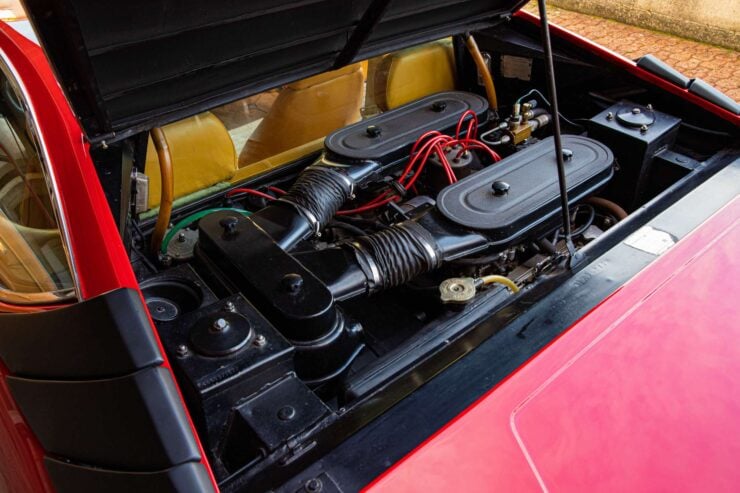
This is the engine compartment, in it sits the 2.5 liter V8 with a single overhead cam per bank. It has an alloy block and heads and it makes 220 bhp with 166 lb ft of torque.
The 2.5 liter engine was good for 220 bhp and 166 lb ft of torque, which was good for a top speed of 143 mph and a 0 – 62 mph time of just over 8 seconds.
Urraco production run ran from 1972 to 1979 during which time 791 examples would be built in total. The car provided some much needed income for the Italian automaker but financial problems persisted, affecting the company deeply throughout the 1970s.
Though it didn’t sell in the numbers that had been hoped for it did conform that there was a significant market for a mid-range sports car under the company’s halo car, and the Urraco would later be used as the platform for both the Lamborghini Silhouette and the Lamborghini Jalpa.
The Urraco also be the forefather of the Lamborghini Gallardo and the Lamborghini Huracán, the Gallardo being the best-selling Lamborghini of all time with over 14,000 sold between 2003 and 2013.
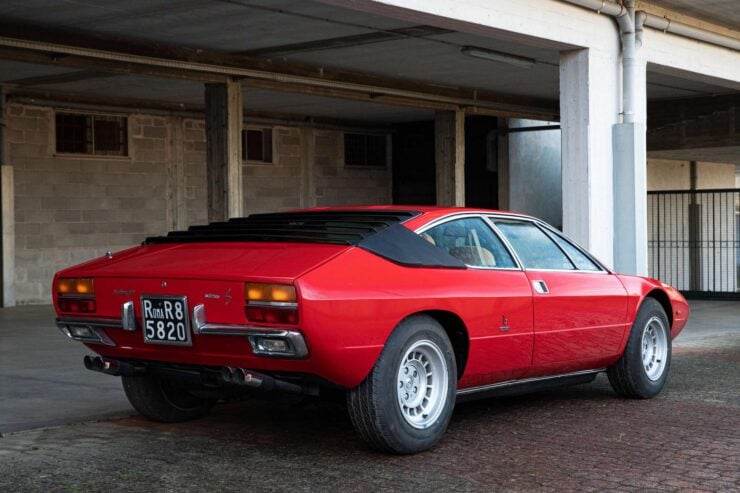
No matter which angle you look at the car from, it looks fantastic. From the rear you can clearly see the influence from the earlier Gandini-designed 1968 Alfa Romeo Carabo concept car.
The 1973 Lamborghini Urraco Shown Here
The 1973 Lamborghini Urraco you see here is one of the desirable P250 S models and it benefits from over €20,000 spent in mechanical work for which there are invoices in the car’s files.
This is a red example of the car, arguable one of the better color options, and it has a tan leather interior in left-hand drive configuration.
It’s fitted with its original Campagnola 14 inch alloy wheels shod with Toyo tires and a Blaupunkt radio/cassette player, the dashboard benefits from a complete set of original Jaeger instruments.
The car is now being offered for sale through Car & Classic out of Frascati, Italy and you can visit the listing here if you’d like to read more about it or register to bid.
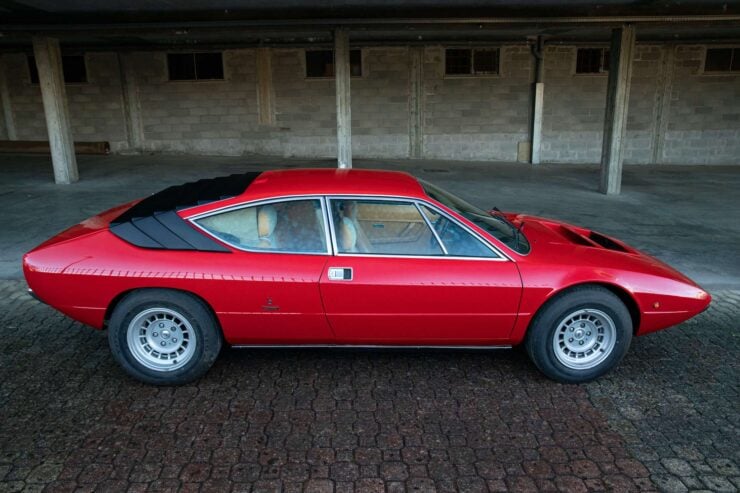
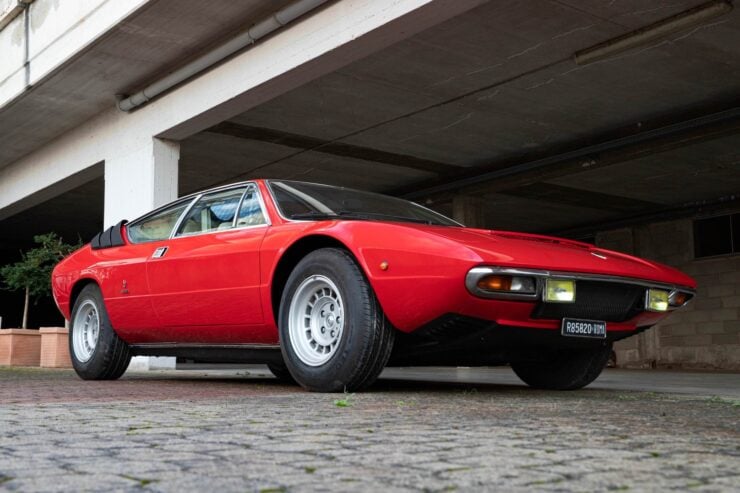
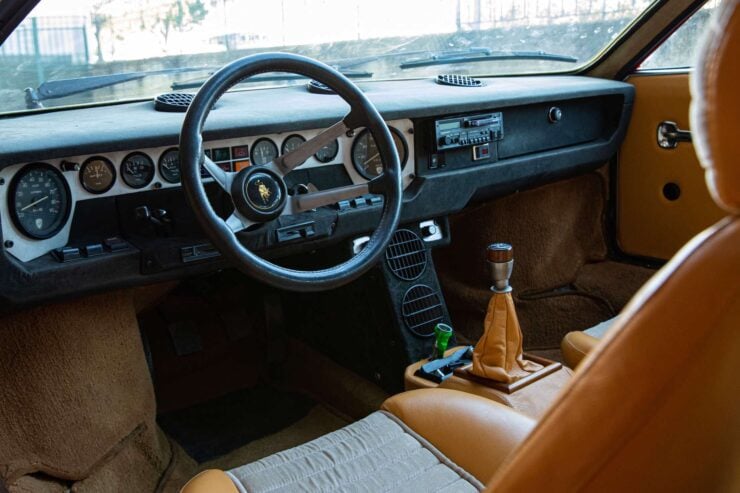
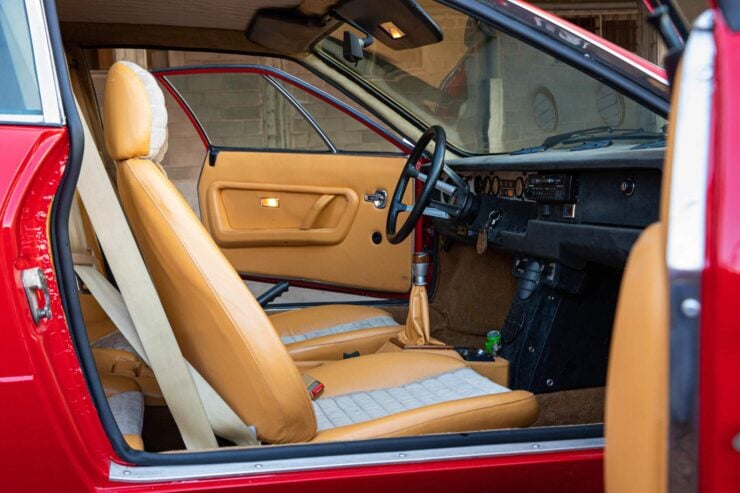
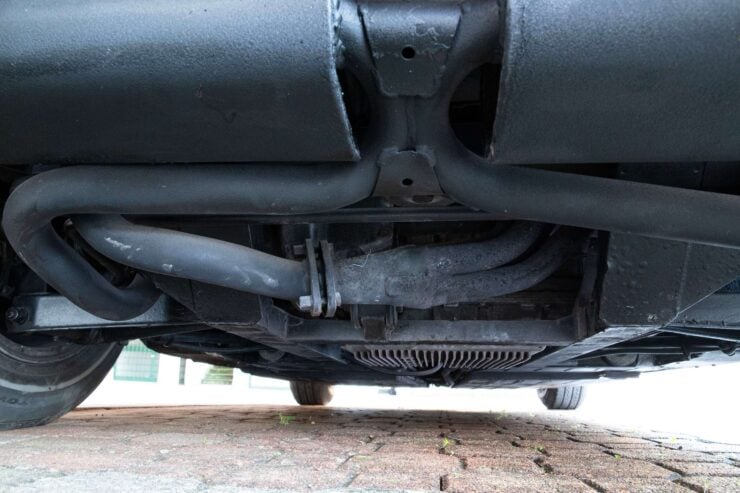
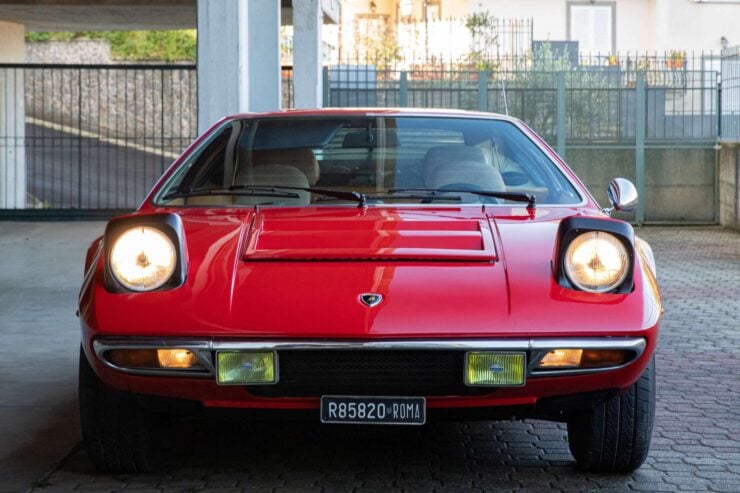
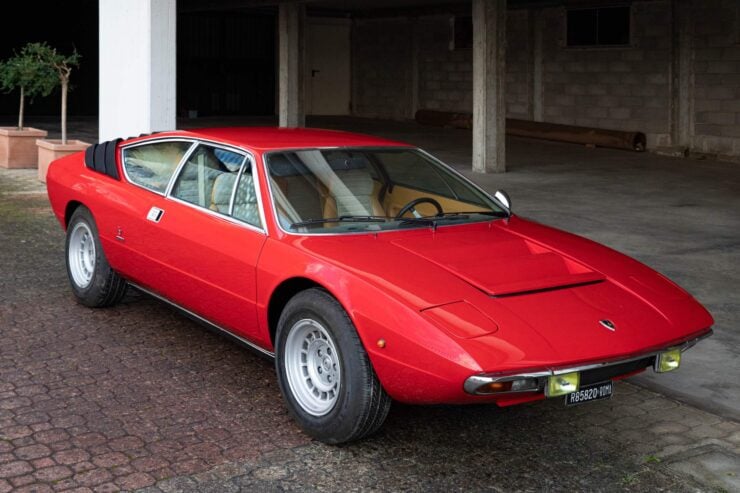
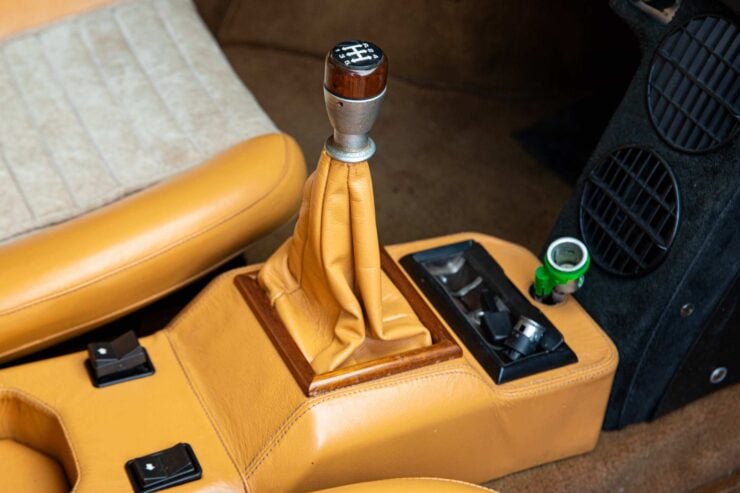
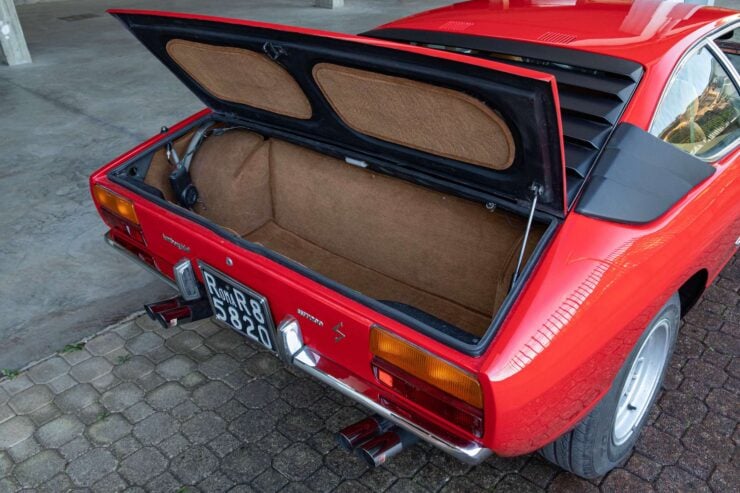
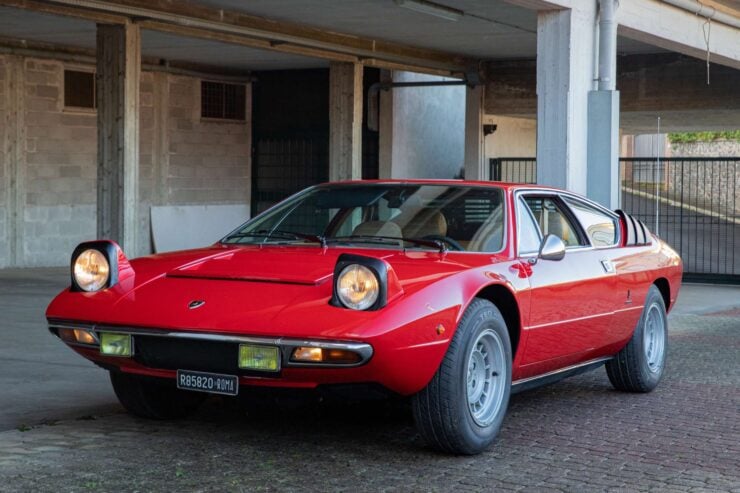
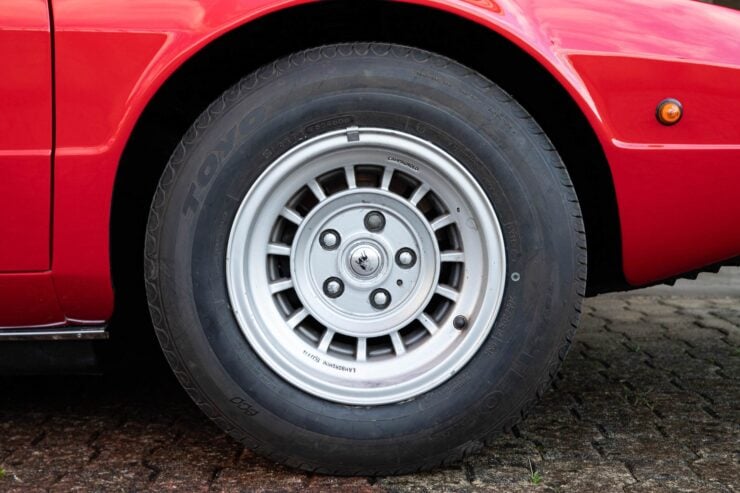
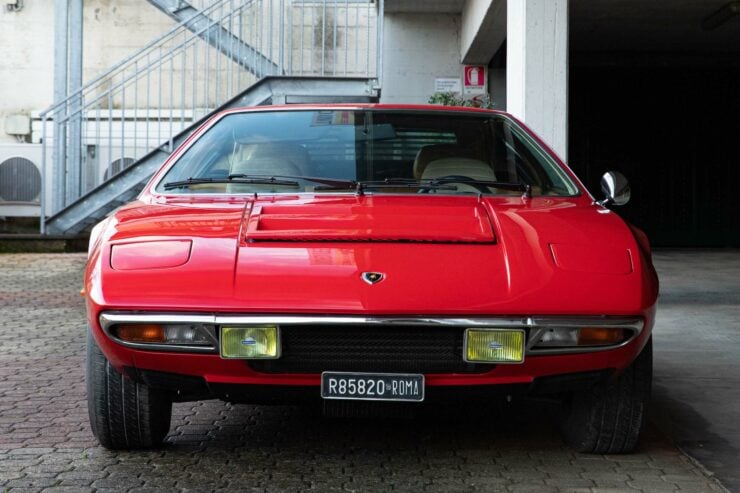
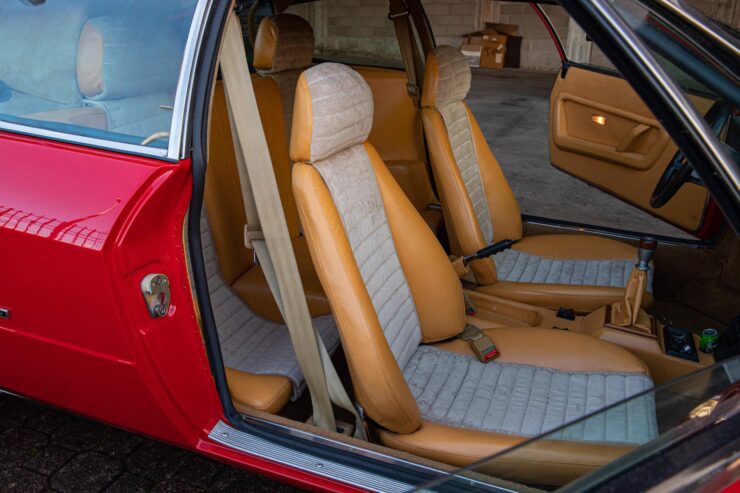
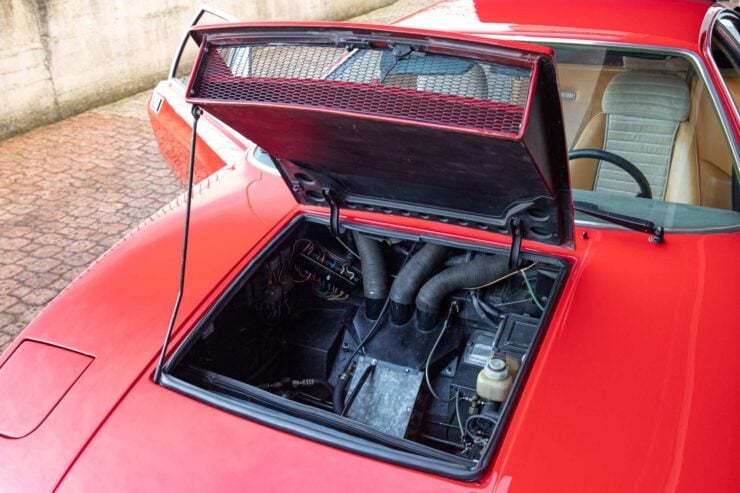
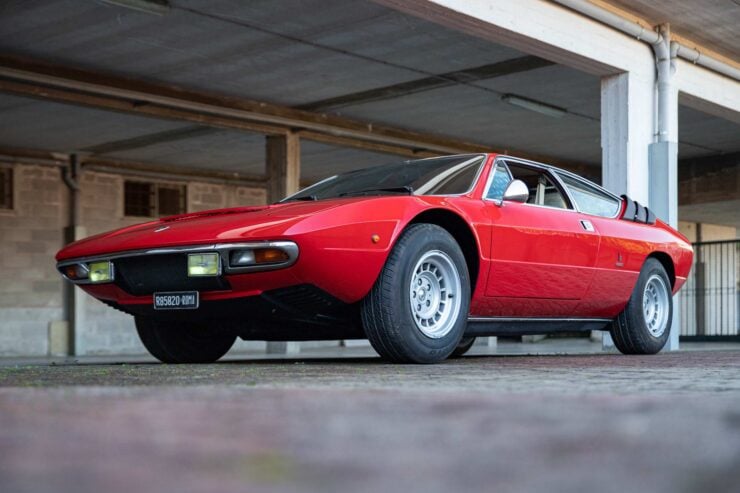
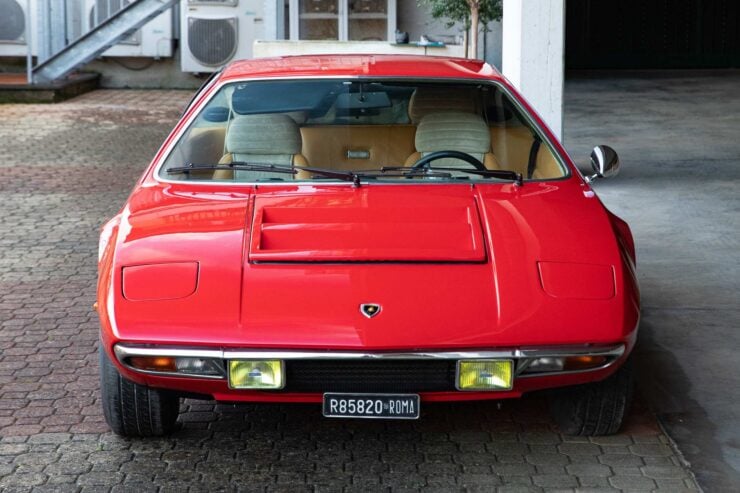
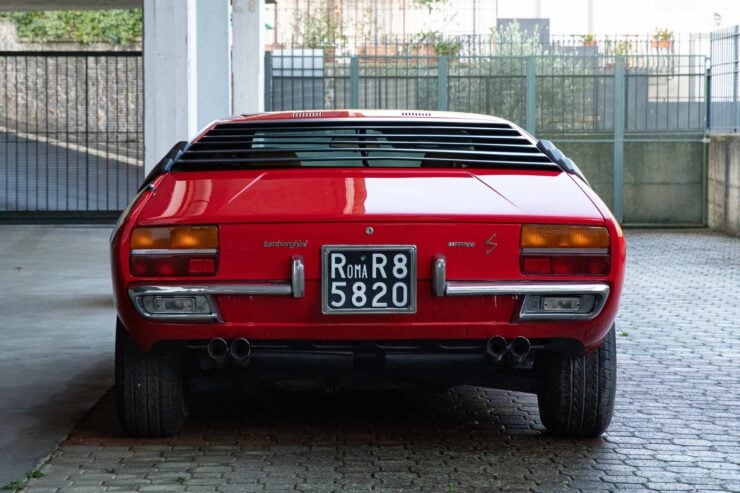
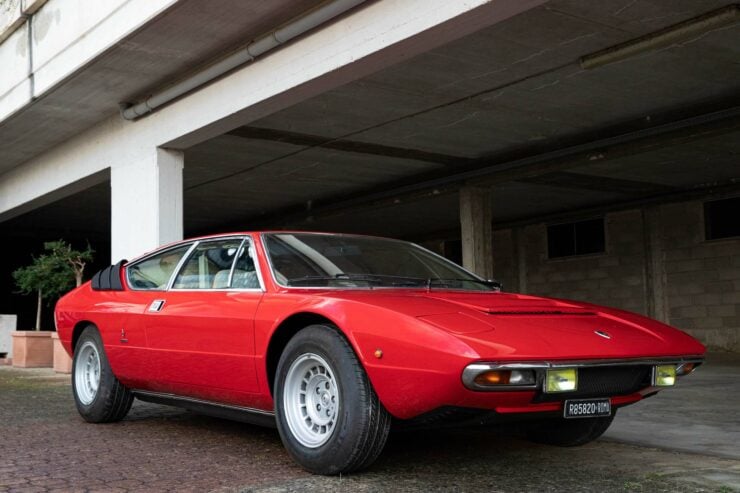
Images courtesy of Car & Classic
The post For Sale: A Lamborghini Urraco – “The Forgotten Lamborghini” appeared first on Silodrome.
from Silodrome https://silodrome.com/lamborghini-urraco/
via gqrds